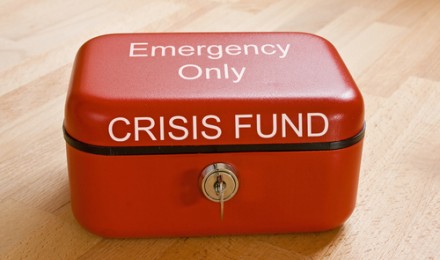Banks and credit unions provide a number of ways to save or invest your money. Unfortunately, this often comes with fees or charges. After all, most banks are for-profit businesses and need to make money in order to continue to provide the services they do. While most of the bank charges are open and people are well aware of them, many can sneak up on a person.
Many bank fees are only associated with certain accounts. These accounts provide more for the customer, but come at a charge. For instance, checking accounts that pay interest will often have an annual fee (often this fee is waived if a minimum balance is kept in the account). Other fees come in the form of membership dues. In order to have the privilege of banking at a credit union, they may charge annual membership fees. The benefit of paying them is the specialized service most credit unions offer. Other fees are not as straight forward. A savings account or CD’s cost the bank money. In order to provide these services the fees are wrapped up in the form of a lower interest rate. So instead of charging a bill every month, the institution might offer slightly lower interest on the account.
Other bank fees are due to negligence on the part of the consumer. Most people are aware of overdraft fees. This happens when a person uses their debit card, or writes a check, for more than the amount they have in their account. The bank will charge the customer for the difficulty of returning checks, often as much as $30 per overdraft. If this happens, the consumer needs to correct the problem immediately, since some stores will try to deposit the check another time, causing another overdraft.
All fees go to cover the service the bank is providing, or to mitigate their losses. Some fees are distinctly service related. Banks will charge for non-customers to use their ATM, and the customer’s bank will also charge. So if a customer of 1st Bank uses an ATM owned by 2nd Bank, they will pay the service fee to both banks. A lesser known similar fee is associated with savings accounts. While it is not because a machine was used, it is because too many withdrawals occurred in any given month. Many banks allow up to 6 withdrawals per month, after that they charge the customer as much as $20 for each additional withdrawal. Since every transaction costs the bank something, they keep their expenses lower by limiting the number of free transactions.
The best way to avoid bank fees is to be well aware of them. There are some truly free (to the customer) accounts out there, and by shopping around the consumer can minimize their costs. For those who are diligent the penalty fees (overdraft, ATM usage, too many withdrawals, etc.) can be easily avoided. Accidents do happen, and if for some reason your account becomes overdrawn, be sure not to blame the bank, and negotiate a waiver of the penalties. If you have been a loyal customer, even for just a few months, they will often happily refund the fee to keep you as a customer.
Banks and credit unions provide a number of ways to save or invest your money. Unfortunately, this often comes with fees or charges. After all, most banks are for-profit businesses and need to make money in order to continue to provide the services they do. While most of the bank charges are open and people are well aware of them, many can sneak up on a person.
Many bank fees are only associated with certain accounts. These accounts provide more for the customer, but come at a charge. For instance, checking accounts that pay interest will often have an annual fee (often this fee is waived if a minimum balance is kept in the account). Other fees come in the form of membership dues. In order to have the privilege of banking at a credit union, they may charge annual membership fees. The benefit of paying them is the specialized service most credit unions offer. Other fees are not as straight forward. A savings account or CD’s cost the bank money. In order to provide these services the fees are wrapped up in the form of a lower interest rate. So instead of charging a bill every month, the institution might offer slightly lower interest on the account.
Other bank fees are due to negligence on the part of the consumer. Most people are aware of overdraft fees. This happens when a person uses their debit card, or writes a check, for more than the amount they have in their account. The bank will charge the customer for the difficulty of returning checks, often as much as $30 per overdraft. If this happens, the consumer needs to correct the problem immediately, since some stores will try to deposit the check another time, causing another overdraft.
All fees go to cover the service the bank is providing, or to mitigate their losses. Some fees are distinctly service related. Banks will charge for non-customers to use their ATM, and the customer’s bank will also charge. So if a customer of 1st Bank uses an ATM owned by 2nd Bank, they will pay the service fee to both banks. A lesser known similar fee is associated with savings accounts. While it is not because a machine was used, it is because too many withdrawals occurred in any given month. Many banks allow up to 6 withdrawals per month, after that they charge the customer as much as $20 for each additional withdrawal. Since every transaction costs the bank something, they keep their expenses lower by limiting the number of free transactions.
The best way to avoid bank fees is to be well aware of them. There are some truly free (to the customer) accounts out there, and by shopping around the consumer can minimize their costs. For those who are diligent the penalty fees (overdraft, ATM usage, too many withdrawals, etc.) can be easily avoided. Accidents do happen, and if for some reason your account becomes overdrawn, be sure not to blame the bank, and negotiate a waiver of the penalties. If you have been a loyal customer, even for just a few months, they will often happily refund the fee to keep you as a customer.







